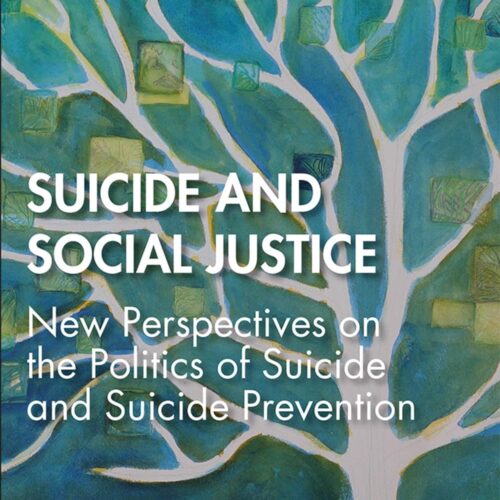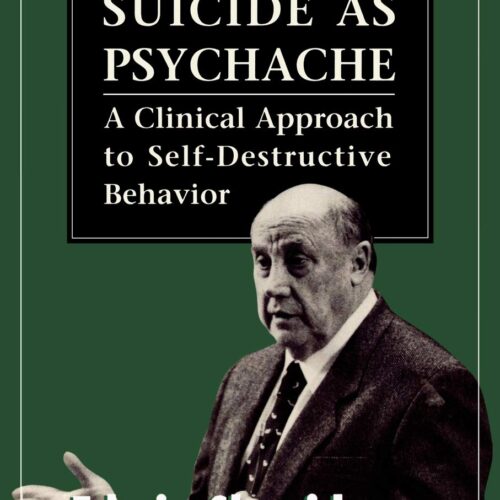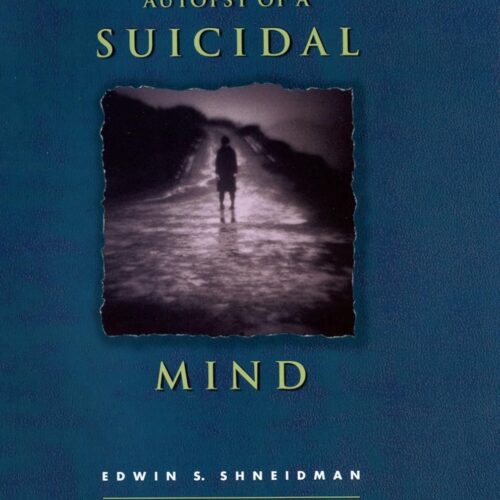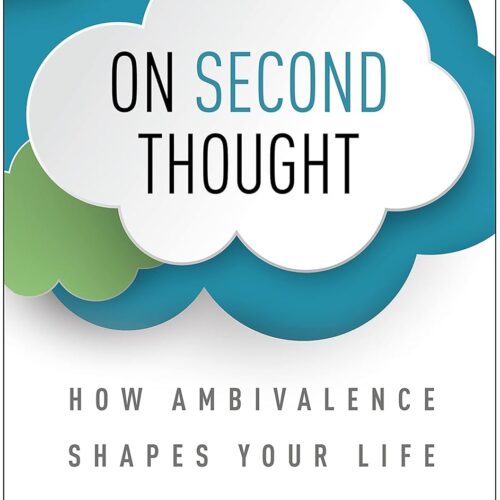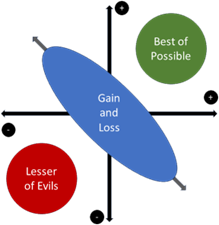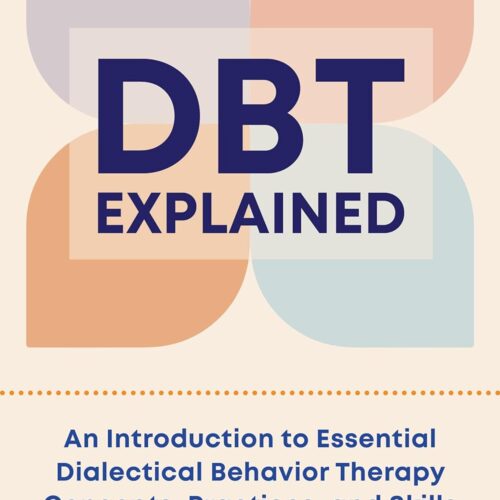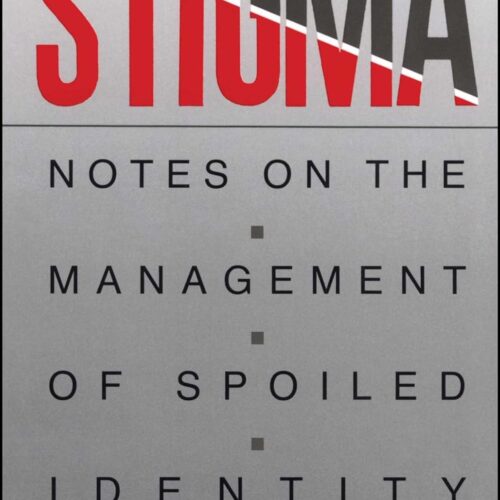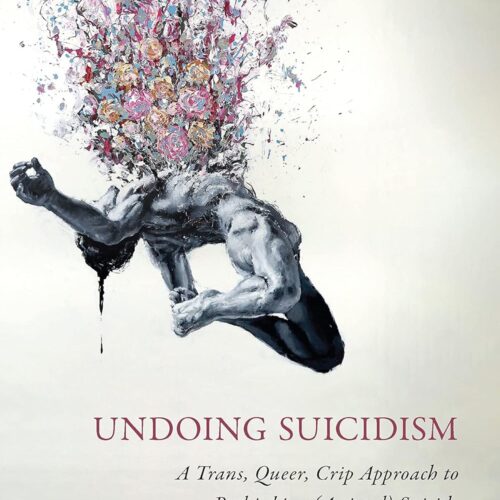
Book Review-Undoing Suicidism: A Trans, Queer, Crip Approach to Rethinking (Assisted) Suicide
As a cisgender, old, white guy, I have no doubt that I come from a different place than Alexandre Baril in Undoing Suicidism: A Trans, Queer, Crip Approach to Rethinking (Assisted) Suicide. I’ve had the honor of sitting on a few diversity panels as an ally. Despite my honest attempts to understand, I recognize that I am falling short. The good news is that my friends – and fellow panelists – are often gentle in nudging me into a more understanding position.
I enjoy having my perspectives challenged. I’ll often read from both sides of an argument or speak to parties on opposite sides of an issue who refuse to be in the same room. For me, this is the heart of understanding: being willing to listen to everyone and accept multiple perspectives. I’m far from agreeing with everything that Baril proposes, but I accept there are some interesting and challenging questions that we need to answer as a society.
Compulsory Aliveness
What right does a person have to insist that another person should stay alive? Our current response to a suicidal person isn’t first to understand their pain and why they want to die or to see what might be done to make their life more worth living. Instead, we focus on the requirement that someone must stay alive. They must fight their suicidal urges and persevere regardless of their pain. In effect, we’ve said that society can say when you should – and should not – die. Someone else brought you into this world, and you’re not authorized to take yourself out of it on your own.
It’s important to note the separation between the current expectations and laws of the country you’re in and your religious beliefs – and what might be the right answer. I say this in the context of understanding this is a dilemma – it’s not solvable, and there is no right answer. Individual versus community is one of the dilemmas that Kidder enumerates in How Good People Make Tough Choices. In Trust, Fukuyama walks through how different focuses of trust between societies, organizations, and families can lead to radically different responses and behaviors. These are the kind of wicked problems that Horst Rittel was talking about decades ago.
That is, there is no solution, no one right answer. Instead, if we want to be responsive, we must constantly reevaluate in the light of new information, new results, and new concerns. Here, then, Baril is calling us to evaluate whether the current balance is right – and argues that it is not.
Start with Caring
There’s no doubt that showing care and concern for other humans is inside of the scope of prosocial behavior that we expect from everyone. Far too often, we’re too busy in our lives to notice the struggling around us. Even if we’re interested in others’ suffering, we must acknowledge that their struggles and their experiences may interfere with getting help. When asked how they are, they may answer, “Fine.” When directly asked about whether they’re considering dying by suicide, they may lie.
They’ll lie for fear of being interrogated, locked up, and forced into situations that they either know -or just suspect – will be bad. While genuine concern for another person and even a modicum of relationship can help people share their inner struggles, we’re averse to it at a cultural level. We know “better” than to share our problems for fear that someone will use them against us.
While a caring conversation about someone else is a good way to start, it’s far from preventing someone from believing that suicide is the right answer for them.
Immediate Detention
[Disclaimer: I’m not an attorney, and this isn’t legal advice.]
The fear is that police will use the laws the allow for immediate detention for a person. In general, law enforcement can hold someone against their will – even if no crime has been committed – if they are an immediate danger to themselves and others. On one side of this issue is the person who is considering suicide. They fear that this provision in law will cause them to lose their freedom and start them down a path of problems.
On the other side is law enforcement, who are concerned that if they utilize immediate detention, they will be sued for violating someone’s civil rights. At least in the United States, law enforcement personnel have qualified immunity when they’re performing their duties. However, this immunity is nullified if it’s shown that the officer acted that maliciously or recklessly disregarded a person’s civil rights. While this seems cut and dried in theory, it’s not so straightforward in practice.
The standard for what constitutes imminent danger to self or others isn’t clear. If you were to say that you plan to kill someone on December 1, 2050, then you’re clearly not an immediate risk. Similarly, planning to die at a specific, far-off date wouldn’t trigger undue concern. However, that’s not generally how it’s phrased. “I’m having suicidal thoughts” is a typical, vague response. It puts the officer in the position of needing to decide if you intend to act on these thoughts immediately or whether they’re something that you have no intention to act on.
Depending on the officer, they’ll request a behavioral health professional who can make this decision, call an on-call judge to get input, or make the decision themselves. Something as weak as “suicidal thoughts” may be coupled with other context clues to yield a decision that there is imminent harm and detention is warranted.
It probably happens less than the suicidal person fears – and more than the law enforcement officer would like. Operating in gray areas isn’t fun for anyone.
The truth is that an immediate detention results in a trip to an emergency room and a more thorough evaluation. That’s not the real problem. The real problem is emergency detention – the kind that leads to extended stays. Immediate detentions, are in most states in the United States, limited to 24 hours.
Emergency Detention
In many states, mental health professionals can ask for an emergency detention (sometimes called a 72-hour hold because of the duration). This normally follows immediate detention and involves more thorough evaluation and treatment by a behavioral health professional. This is what most fear when they say that they’re having suicidal thoughts.
The rules for these detentions vary widely, but they can sometimes be extended and sometimes lead to a longer-term commitment hearing. Whatever the case, they’re very scary for the person involved.
Do we need a MAID?
Some states and Canada have laws for medical assistance in dying – or assisted suicide. Conceptually, it allows medical professionals to provide either resources or assistance in a patient dying; practically, it represents a few challenges. The basic premise is that a professional assesses that someone has carefully considered suicide and has decided it’s right for them. Once this decision is made, the preparations are made.
However, whether we call it “carefully considered” or “well-reasoned,” the question becomes what meets this standard? If the standard is set too low, then people will needlessly end their own lives. If it’s set too high, then people will subvert this system and instead resort to their own means.
The benefits of reasonably set criteria to society are two-fold. First, the substantially lower chance of medical costs for attempted rescue. Second, the consequences of an attempt that doesn’t end in death. To the individual, it allows them dignity and the ability to have loved ones with them when they die.
On My Terms
One could argue, then, that the person can die by suicide even if they don’t receive medical assistance. However, that necessitates that it be done in secret with potentially painful means that may not be successful and instead permanently disable the person, making their pain and suffering worse. The argument for an accessible, societally-accepted opportunity to kill oneself follows the same reasoning that we legalize other behaviors.
America tried prohibition and failed, because it drove alcohol underground and did more damage than good due to the rise criminal organizations and the lack of quality control that ensued. States across the country are decriminalizing marijuana. We’ve decided that it’s better to regulate and accept the behavior instead of criminalizing it.
On a Mission
One of the opportunities I’ve had is to sit around conversations about what works with church missions – and what doesn’t. I’ve learned about the challenges of even well-meaning but under-informed people. “Steel Axe Heads for Stone Age Australians” is a powerful example of how things can go wrong. (See Diffusion of Innovations for more.) To simplify the problem, it’s a difference between “doing for” and “doing with.” The first is more honestly stated as “doing to.” When we approach a mission as doing something for/to a group of people, we’ve got it wrong. We need to enable them, so that they can do it themselves.
The shift in thinking moves us to asking questions about what suicidal people need or want instead of deciding that they need what we think they need. I’m not saying that in every case we’ll agree with what they want – but we should at least know what it is.
Sanism
Who should be allowed to decide for themselves to die? If they’re not, then who should be allowed to make that decision? Should executors of their wills or their heirs be able to make the choice? This is the heart of the question about neurodiverse people who process information and emotions in ways other than is considered normal. Some use the word “sanism” to refer to discrimination against the neurodiverse.
Here, too, I think we have serious moral challenges that have no clean solution. If people are living with mental disabilities to the point that they can’t make all decisions for themselves, can they or someone they designate ask for assisted suicide for them?
The standard protection is that the person who is electing death for another not benefit from the decision. That is, they can’t be an heir or an executor to the estate. The problem with this conceptually is that these are presumably the very people who care the most for you – and if they don’t, what remedies does society have to keep them honest?
Last Chance
For those whose suicidal thoughts are persistent or at least recurring, it should be noted that suicide is the last option. Surely, there are “impulsive” suicides who will not fully consider their options. (See Decision Making and Sources of Power for perspectives on decision making.) For those who’ve battled with suicide for a long time, there is a sense of clarity that suicide is irreversible. There’s also often a sense that it’s a bad option. However, the problem is that there are no other options that seem available.
Shneidman said that “only” is the four-letter word of suicide. (See The Suicidal Mind.) That’s because people who die by suicide see it as the “only” option. They’ve lost hope that their pain and suffering can be or will be remedied by any other solution. In the absence of other options, you go with the only one you have. That’s one of the reasons that concepts like “safe for now,” which leaves the option of suicide open in the future but removes it from the table for now, are so important. (See Managing Suicidal Risk, 2e for more.)
Moral Duty
Societal norms require that individuals dissuade others from suicide. We’re expected to want the person to stay alive – whether we do or not is not relevant. We’ve got to learn how to validate their perspectives – even if we don’t personally agree – before attempting to change the course of their thinking. Techniques like Motivational Interviewing can help fight against the righting reflex, which invalidates the other person’s perspectives and feelings and may make suicidal ideation worse both to fight the invalidation or, if they accept the invalidation, develop self-hate.
I wouldn’t go so far as to call our desire to help our fellow man a bad thing. I would, instead, say that we’re sometimes confused by what helping is – and isn’t. I do believe that accepting that someone would want to leave this life, their community, and us is a hard thing. However, if we’re not willing to accept that there are some times when suicide is a valid option – as rare as they may be – we may have to take a more radical approach to get to Undoing Suicidism.

